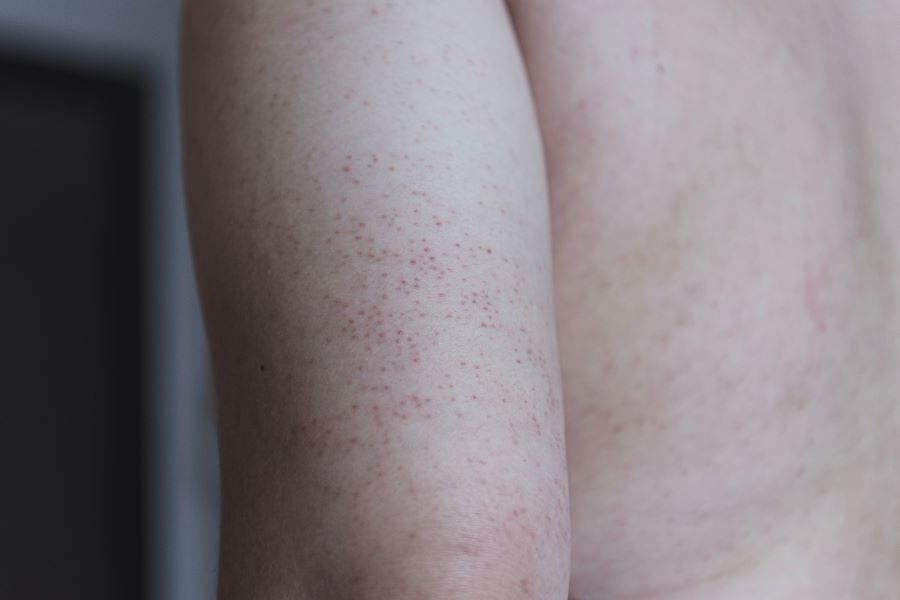Keratosis Pilaris: Identification and Treatment


Keratosis pilaris (often dubbed “KP”) is a common and usually mild skin condition in which the skin can resemble dried, plucked chicken flesh. These tiny “bumps” are often mistaken for small pimples and are painless.
Affected skin has a characteristic rough, sandpaper-like texture, even if the tiny bumps are not visible to others. The skin can be very dry and often itchy. KP is often worst in the winter months (thanks to drier air) and in low-humidity climates. The condition is often seen in other family members and tends to be worse in those with atopic dermatitis (eczema).
In children, keratosis pilaris is most frequently isolated to the back side of the upper arms, on the thighs, and on the cheeks. In adolescents and adults, the buttock area is also commonly involved. KP is frequently encountered prior to 2 or 3 years of age, but it may not be noticed until a child becomes a teenager, when hormone levels increase.
KP occurs as the result of dead skin cells clogging the skin pores (or hair follicles). There is a buildup of keratin (a hard protein that protects the skin from harmful substances and infection), which blocks the opening of the hair follicle. When many plugs form, this causes the rough and bumpy skin to be noticed.
For most people, keratosis pilaris is a harmless skin condition that doesn’t cause much trouble. For others, however, the dryness and itching may be bothersome. Because there are such similarities between keratosis pilaris and eczema, a treatment plan for KP should focus on relieving dryness and itching. Dead skin cells can be sloughed off with gentle use of a loofah sponge, body scrub, or even a rough wash cloth. An oil-free moisturizing cream should be used at least twice a day to provide soothing relief. Sometimes, a topical steroid may be recommended by a doctor. A home humidifier can moisten the air in the home, which helps prevent dry skin.
For many, even if untreated, the affected skin gradually improves or resolves with age.
Sources:
- Keratosis pilaris
- American Academy of Dermatology
- Accessed January 17, 2017.
Mirmirani P and Rogers M - Keratosis pilaris and other inflammatory follicular keratotic syndromes
- Chapter 87
- In: Goldsmith LA, Katz SI, Gilchrest BA, et al. eds. Fitzpatrick’s dermatology in general medicine. 8th ed. New York: McGraw Hill, 2012.
Powered by Bundoo®











































